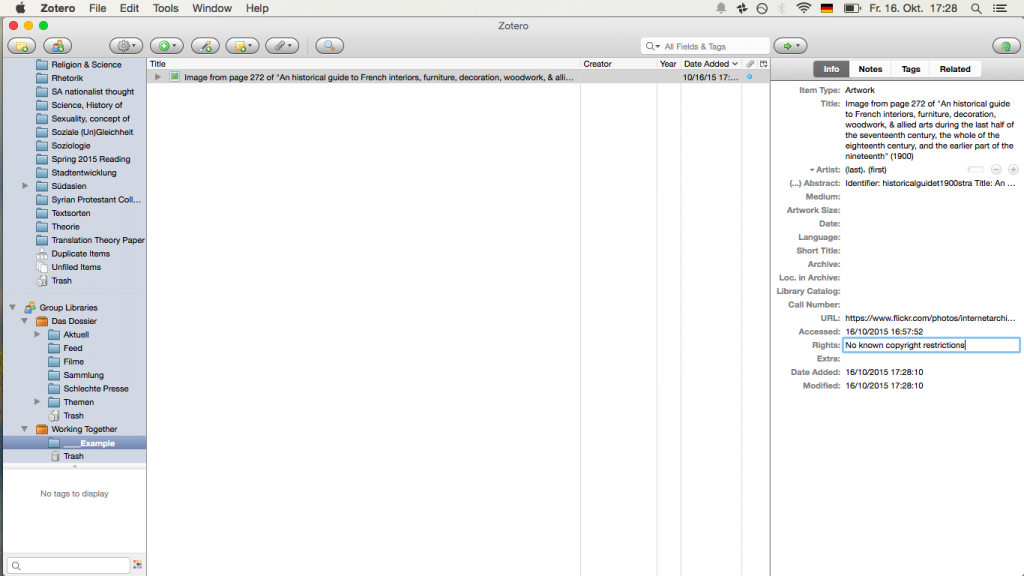Computerized scholarship is a beautiful thing. So much can be done, we weren’t able to do before. We can enter troves of data, tag it intelligently, and explore new connections through visualization, or discover them quicker than before. We can present scholarship in new ways — if done right, more evocative than the sequence of text and image fixed forever by an author or editor.
My students made great use of computational technologies to produce images, slideshows, and videos. A number of them to scholarly gain. They produced collages that place French-Japanese lacquer cabinets in different rooms at Versailles, some of these rooms reconstructed for the first time from designs that had been forsaken in favor of what was eventually realized. They created slideshows that stripped gilt bronze details from the underlying lacquer, calling particular attention to their make up. They isolated Japanese imagery from black lacquer panels that make up the cabinets, again, showing what could have been, what other art historical genealogies were possible.
To accomplish that, they used imagery from a variety of sources. Some of them specifically provided by the Metropolitan Museum of Art, others scanned from books, taken from Flickr or collected from museum or auction house websites. Some of these pictures they used to produce insightful collages or videos are open source, some of them licensed under the Creative Commons license, many of them are copyrighted.
It is virtually impossible to retrace, after the fact, the source of every image used and, importantly, the rights held on them.
Now, that I am giving my students’ work the finishing touch for potential publication, it is virtually impossible to retrace, after the fact, the source of every image used and, importantly, the rights held on them. Yes, you can reverse image search. Simply enter a URL of a picture or upload it and Google will provide you with exact or similar matches. But if a given picture is scanned from a book, you’re out of luck. If the picture has been modified by students as part of their work, as ours have done to great effect and gain, you’re out of luck.
When a student submits a paper that’s missing citations, we grade them down. A scholar is expected to account for their sources. So when students produce digital work, we need to require the same. And just as with essays, the management of sources, references, or citations needs to be part of the workflow from the beginning. As far as I can see, Zotero suits this purpose.1 Students can enter references for images, videos, audio recordings, or websites.
Have students include this license information as part of the reference when they start using material.
Importantly, aside from author, date, and publisher, Zotero also includes the field “Rights”. Some material that students may want to reproduce is copyrighted and requires explicit permission by the rights holder; some is under Creative Commons license and requires you to attribute the author, permits or prohibits modification, or is limited to non-commercial use; some is public domain and freely available, modifiable, and reproducible. Have students include this license information as part of the reference when they start using material and teach them to be aware of the limitations some licenses place on the use of that material. The collection of references can be shared among members of a project. In Zotero, simply create a group, add members, and start saving items to the group folder or move existing collections there.
When we teach digital humanities, we do so knowing that computational skills are indispensable to our students’ professional success. With the easy reproducibility computers afford, it is crucial to know the legal provisions, limitations, and implications of working with digital material.
—Tobias Pester, Graduate Student of Global History at Columbia University and the London School of Economics, #BarnardTeaches, DH@Columbia, written in #academicmarkdown
“About the Licenses – Creative Commons. Creative Commons.” Accessed October 16, 2015. https://creativecommons.org/licenses/.
- I’m going off of Zotero because that’s what I’m using. Feel free to use any other software you’re familiar with and please share your insights.↩
